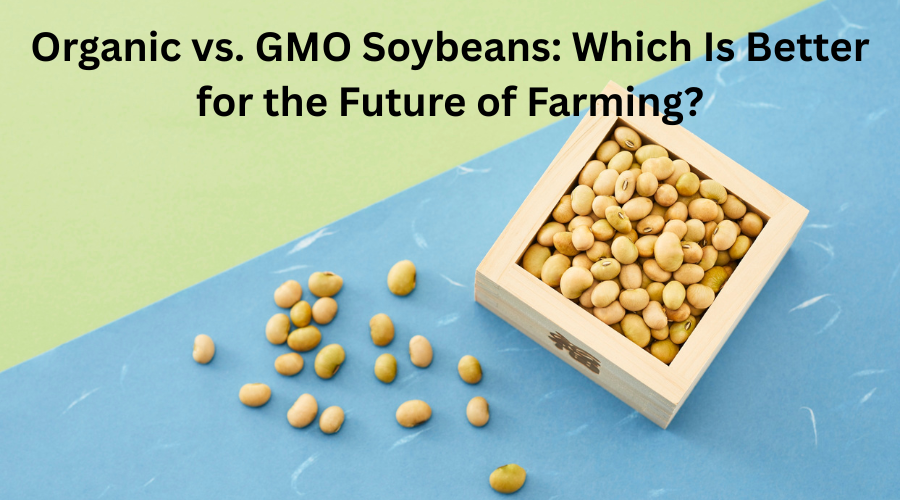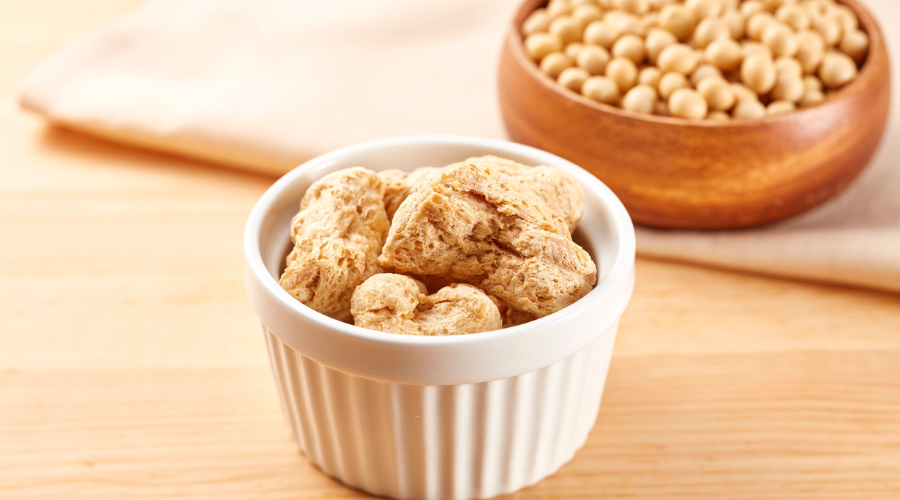
Soybeans are one of the crops that have high value in the world. They feed human beings, their cattle, and even become part of the majority of our daily commodity goods. Nonetheless, there is a continuous debate on the way we are expected to nurture them.
Will farmers retain the use of organic farming, or will they go on with the utilization of genetically engineered organic soy beans? We will take a look at both sides and see what each solution has in store for us.
Organic soy beans are farmed traditionally without chemicals or genetic modification. They use natural mechanisms to inhibit pests in case of an attack on the plants, compared to chemical sprays.
Commercial production of organic soybeans means working in harmony with nature, rather than struggling against it. The farmers also do crop rotation and crop covering, so as to rest the land and rely on the beneficial insects to keep the bad bugs off. It requires greater planning and realism, but the majority of farmers believe that the work is worth doing.
GMO is the abbreviation that translates to genetically modified organism. In one study, scientists take soybeans and place them in a laboratory, then change their genes to achieve specific traits. Most GMO soybeans have been engineered to be resistant to particular herbicides. This means that farmers can spray their farms and the soybean crops are not destroyed by the herbicides.
Pest or disease resistance in some GMO soybeans is also engineered. The goal is to simplify farming and make it more efficient by breeding plants capable of withstanding tougher conditions than normal soybean plants.
The most common argument for GMO soybeans is that the soybeans tend to yield more beans per acre. The plants can focus all their energies on the growth of soybeans when the weeds do not compete with the crops and when the pests are kept in check. To farmers whose task it is to sustain an ever-growing population, an increase in yields is important.
Organic soybeans also yield lower amounts per acre.No use of chemical pesticides and herbicides, farmers are more susceptible to competition from weeds and destruction by insects. Nevertheless, organic farmers argue that healthy soil yields healthy plants, which are better equipped to support themselves in the long run.
It may cost a lot of money to grow GMO soybeans. Most GMO seeds are patented, such that farmers have to purchase special seeds every year. They should also buy herbicides designed explicitly for their GMO crops. These costs add up quickly.
Organic agriculture has other expenses. The farmers do not have to purchase costly chemical inputs, but they end up paying more for labor. Hand-weeding or adopting mechanical methods requires time and labor. Organic certification is also a source of cost, as well as close record-keeping.
This is where the organic soybeans favor. Their price is normally much higher than that of traditional or GMO soybeans. Consumers are willing to spend more for natural products, and this implies that even when farmers produce less, but in total, they will make more money per bushel.
Soy beans made into GMOs are available at normal market prices. Farmers may produce larger quantities of them, but they do not receive a higher price than organic farmers. It will usually rely on which is superior: expanding at a reduced price or reducing at a higher price.

It is at this point that complications occur. Organic farming is generally more beneficial to the soil. The natural fertilizers make the soil type and the presence of positive microorganisms favorable. The organics are more varied in the organic fields, and the other plants and insects create a self-sufficient ecosystem.
The herbicides used on GMO crops, however, can affect surrounding plants and insects. It is feared that the weeds developed immunity to the use of the herbicide may develop with time, hence creating greater challenges in the future.
The pollution of GMO crops is a concern for organic farmers. The GMO soybean pollen might spread to organic fields, rendering the organic farmer a non-organic farmer in such a case. This introduces a contradiction to agricultural societies that can accommodate both types of agriculture.
Buffer zones and proper planning are a requirement to keep GMO and organic farms apart. Regulations exist on the distance between these farms in some areas.
Organic farming places much emphasis on the generation of healthy soil, which will be capable of withstanding time. Its techniques enhance the soil structure and promote an active underground ecosystem of bacteria and fungi. Healthy soil has a greater capacity to hold water and reduce erosion.
GMO agriculture does not always have an adverse effect on soil, but it does not necessarily emphasize soil building either. It is more of an immediate production than a long-term improvement of the soil. Nevertheless, farmers who utilize GMO seeds also employ conservation practices that safeguard the health of the soil.
These two types of farming require water, although they utilize it in different ways. The dry seasons tend to persuade the organic soybean with healthy soils, as the soil contains a lot of moisture. The extensive root systems promoted by organic techniques enable plants to access water during droughts.
The irrigation of GMO soybeans may be required constantly in some areas, especially when the soil is not optimal. However, some forms of GMOs are being engineered to become more resistant to droughts, which would be beneficial in regions affected by drought.
The only method won't be to adopt either, but to learn from what has been learned. Farmers require alternatives which can benefit their farms, markets, and their societies. Further improvement of farming have to prioritize sustainable practices.
Which of the soy beans is safe to eat?
Organic and GMO soybeans are also safe to consume, and they are accepted by food safety companies worldwide.
Are genetically modified soybeans more expensive to cultivate?
Yes, GMO seeds and the herbicides used with them are usually more expensive than organic seeds; however, they are often cheaper in the long run.
Is it possible to have organic and GMO soybean farms next to one another?
Yes, but they require buffer areas between them to avoid cross-contamination by the floating of pollen.
Soybeans are one of the crops that have high value in the world. They feed human beings, their cattle, and ...
READ FULL